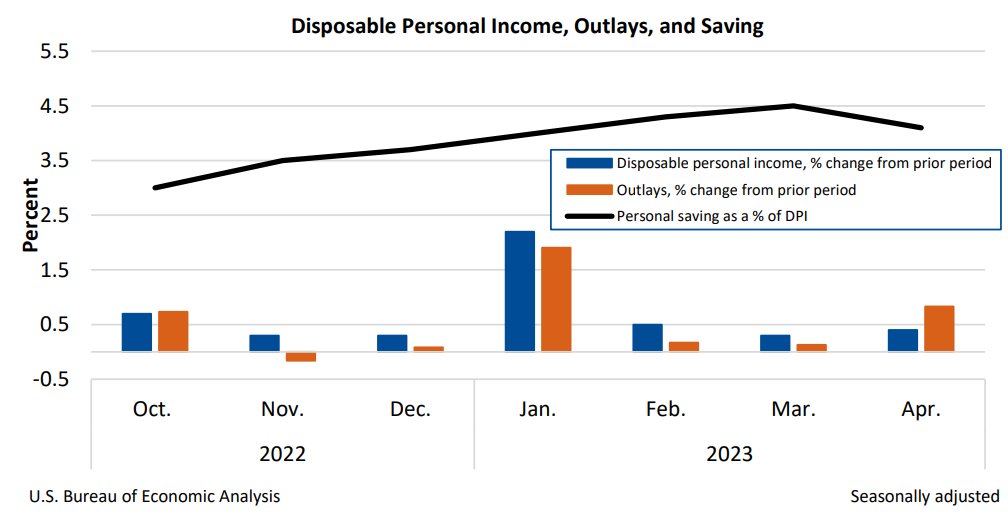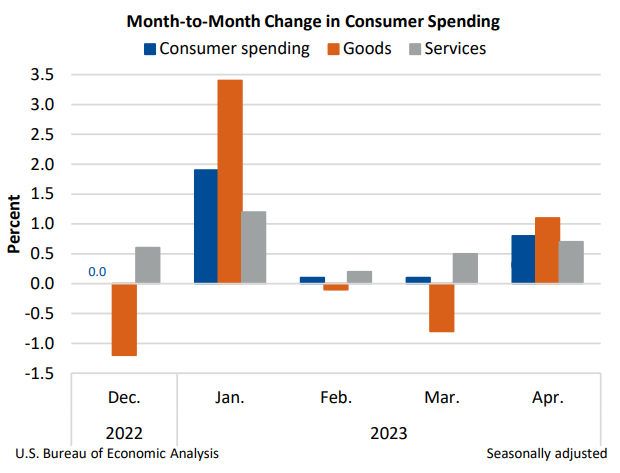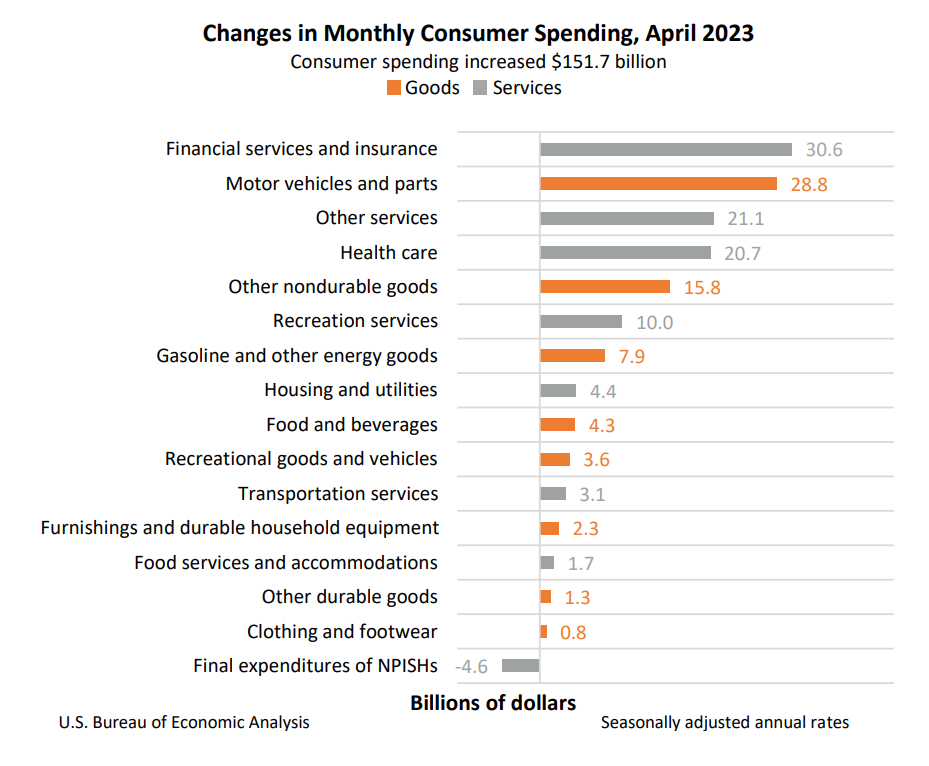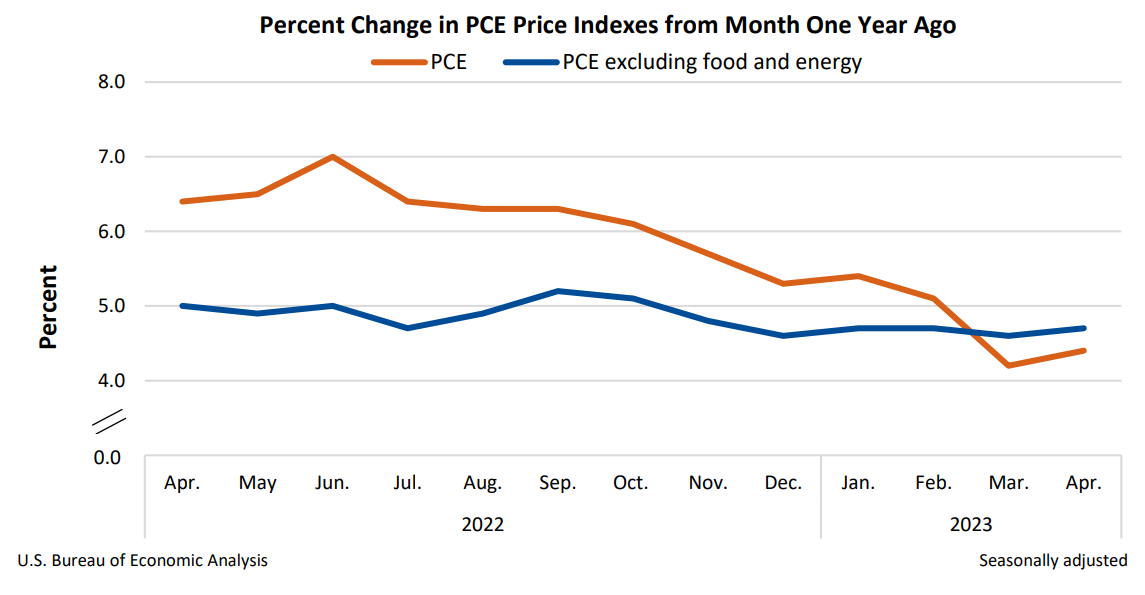Personal income increased $80.1 billion (0.4 percent at a monthly rate) in April. Disposable personal income (DPI) increased $79.4 billion (0.4 percent). Personal outlays increased $156.0 billion (0.8 percent) and consumer spending increased $151.7 billion (0.8 percent). Personal saving was $802.1 billion and the personal saving rate—personal saving as a percentage of disposable personal income—was 4.1 percent in April.
Personal income
In April, personal income increased, primarily reflecting increases in compensation and personal income receipts on assets that were partly offset by a decrease in personal current transfer receipts.
- Within compensation, the increase was led by private wages and salaries, based on data from the Bureau of Labor Statistics (BLS) Current Employment Statistics (CES). Services-producing industries increased $38.6 billion and goods-producing industries increased $10.1 billion.
- Within personal income receipts on assets, both personal interest income and personal dividend income increased.
- The decrease in personal current transfer receipts was led by a decrease in "other" government social benefits, which reflected decreases in one-time refundable tax credits from state and local governments.
Consumer spending
The $151.7 billion increase in consumer spending in April reflected an increase in spending for both goods and services.
- Within goods, the largest contributors to the increase were motor vehicles and parts (led by new light trucks), based on unit sales data from Wards Intelligence, and "other" nondurable goods (led by pharmaceutical products).
- Within services, the largest contributors to the increase were financial services and insurance (led by financial service charges, fees, and commissions), "other" services (led by professional and other services), and health care (led by hospitals).
PCE price index
From the preceding month, the personal consumption expenditures (PCE) price index for April increased 0.4 percent. Food prices decreased less than 0.1 percent and energy prices increased 0.7 percent. Excluding food and energy, the PCE price index increased 0.4 percent. For a comparison of PCE prices to BLS consumer price indexes, refer to NIPA Table 9.1U. Reconciliation of Percent Change in the CPI with Percent Change in the PCE Price Index.
From the same month one year ago, the PCE price index for April increased 4.4 percent. Prices for goods increased 2.1 percent and prices for services increased 5.5 percent. Food prices increased 6.9 percent and energy prices decreased 6.3 percent. Excluding food and energy, the PCE price index increased 4.7 percent from one year ago.
Real disposable personal income and consumer spending
Real DPI increased less than 0.1 percent in April. Real consumer spending increased 0.5 percent, reflecting increases in spending on goods of 0.8 percent and spending on services of 0.3 percent. Within goods, the largest contributor to the increase was spending for motor vehicles and parts (led by new motor vehicles). Within services, the increase was led by spending for financial services and insurance.
For more information, read the full release.



